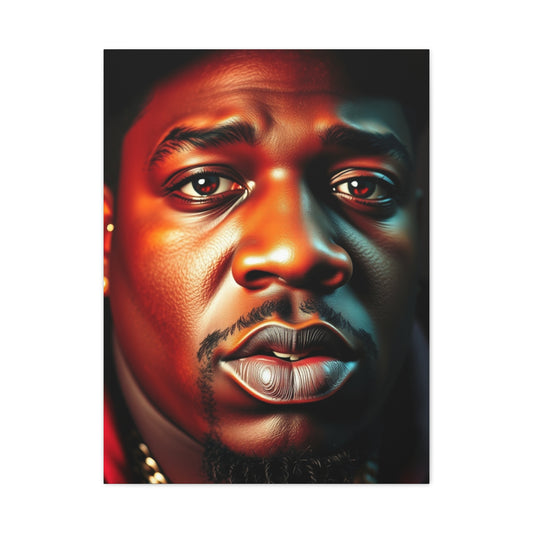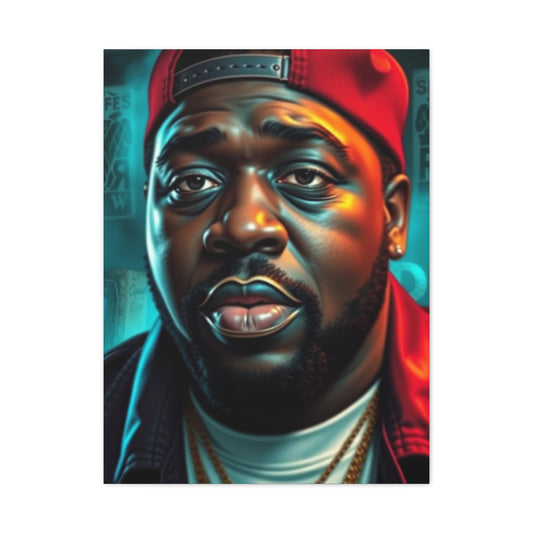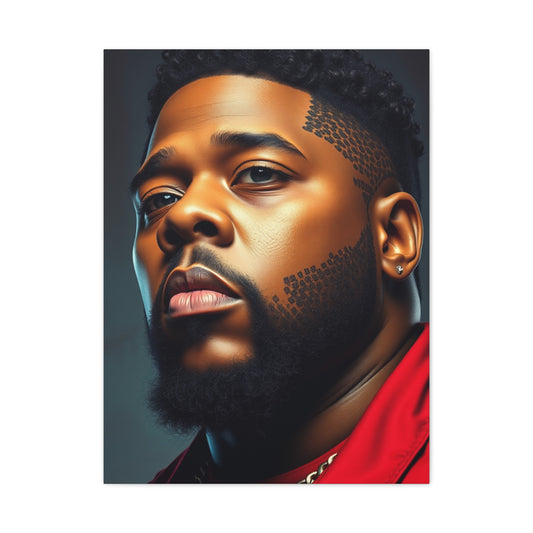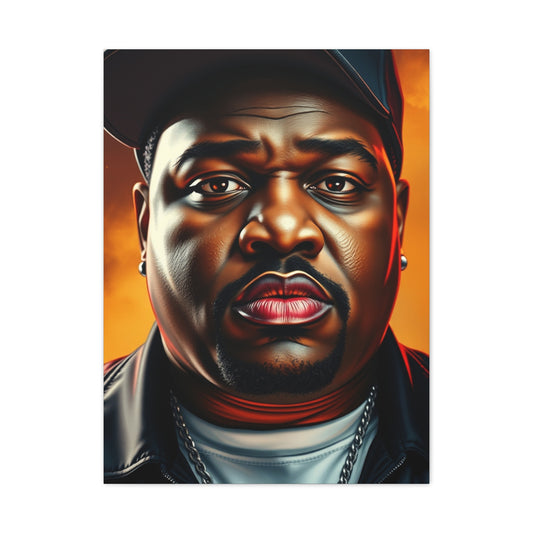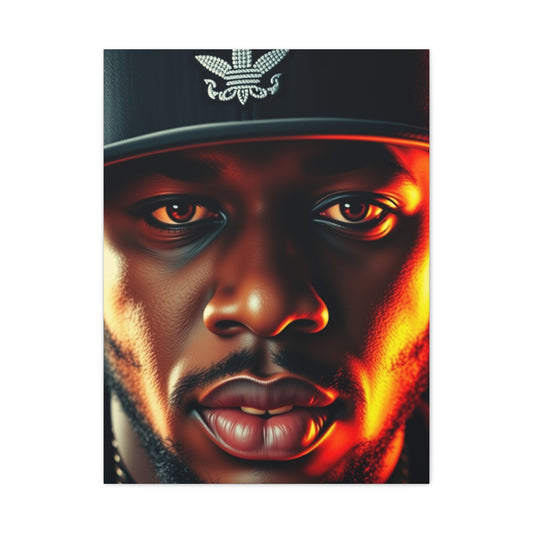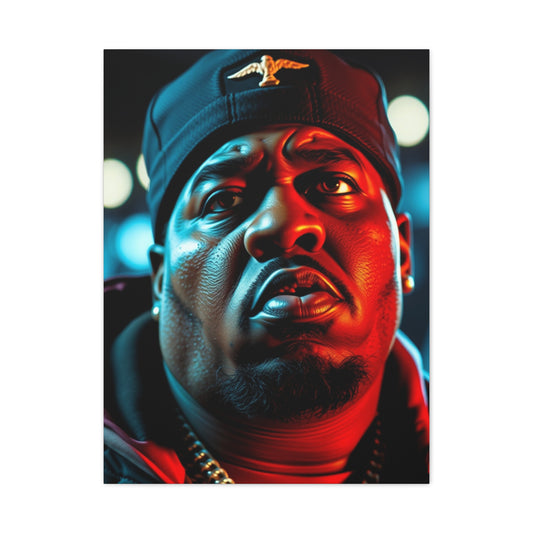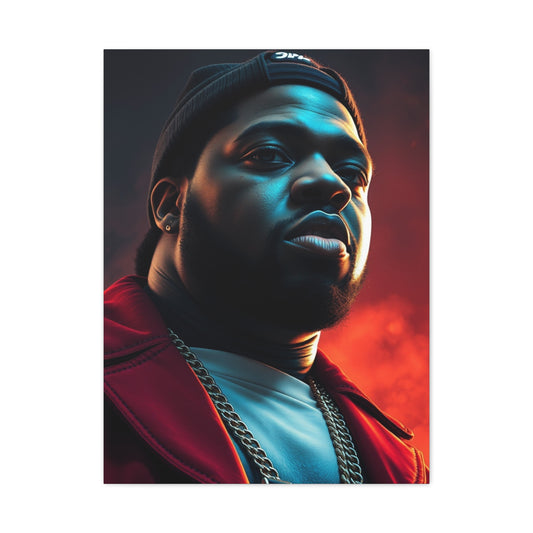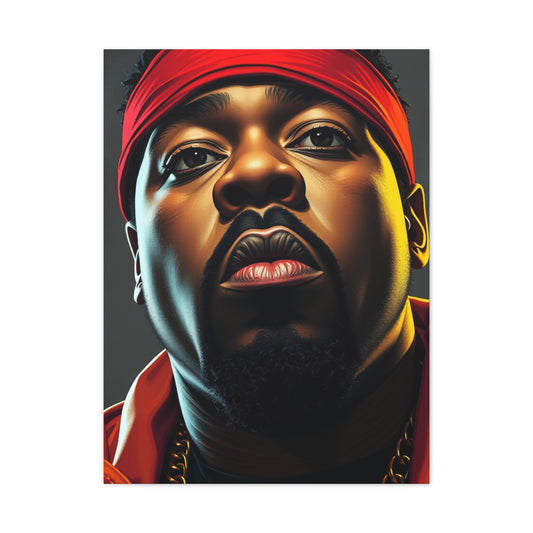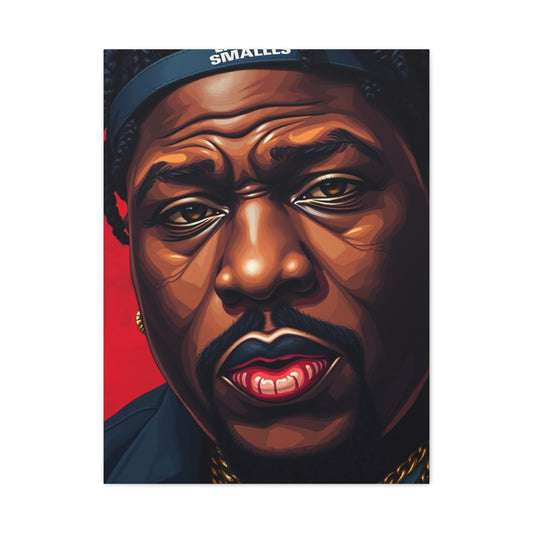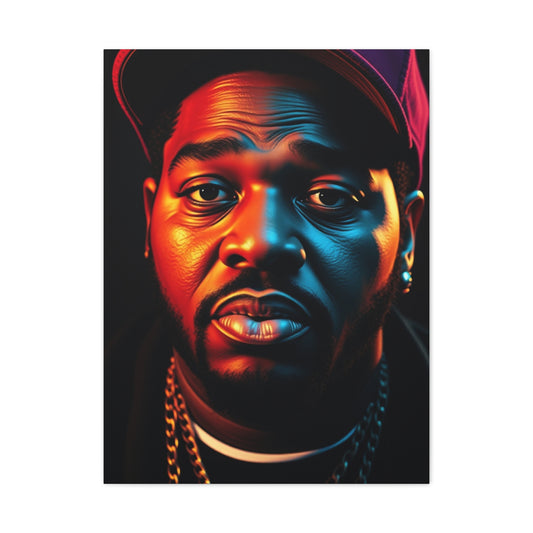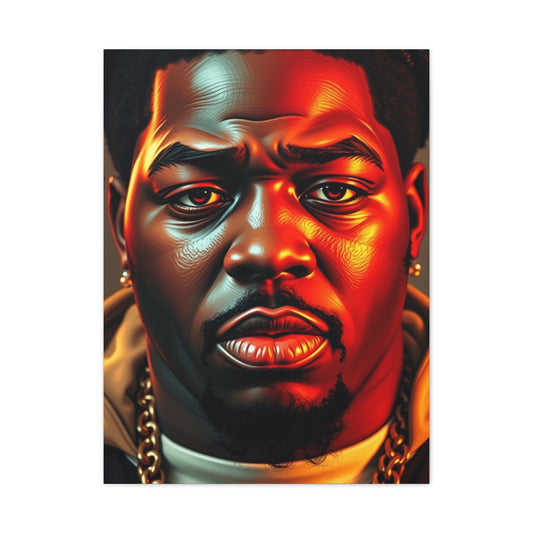The Immortal Legacy: Biggie, Rocko, and Brooklyn's Street Wall Art Revolution
Brooklyn’s streets pulse with the vibrant echoes of its rich cultural history, where art and music collide to tell stories of resilience, identity, and legacy. Among the towering figures who have shaped this narrative are The Notorious B.I.G. (Biggie Smalls) and Rocko—two legendary artists whose impact transcends music and finds powerful expression in Brooklyn’s street wall art revolution.
This movement transforms urban walls into vivid tributes, celebrating the spirit and legacy of these icons while reflecting the community’s ongoing story. Biggie and Rocko symbolize more than their musical achievements; they embody Brooklyn’s tenacity, creativity, and unyielding voice in hip-hop culture. Artists across neighborhoods like Bed-Stuy and Bushwick capture this essence through murals that merge bold colors, dynamic forms, and meaningful symbolism.
What sets Brooklyn’s street art apart is its accessibility and authenticity. These murals aren’t confined to galleries—they live in the heart of the city, accessible to all, acting as public memorials that honor both the past and the present. They spark conversations, inspire pride, and serve as cultural beacons, preserving the legacies of Biggie and Rocko in ways that resonate deeply with the community.
Moreover, this wall art revolution plays a vital role in urban renewal, drawing tourists and art lovers eager to experience Brooklyn’s creative pulse firsthand. It also empowers local artists to tell their stories, reinforcing community identity and pride.
In essence, the immortal legacy of Biggie and Rocko is etched not just in music but across Brooklyn’s walls, a testament to art’s power to immortalize legends, unify communities, and fuel cultural movements that continue to inspire future generations.
How Rocko Turned a Wall into a Legacy
Artist Rocko didn't simply paint a mural when he took a brush and spray can to that Bedford-Stuyvesant wall—he performed an act of urban alchemy, transforming mundane concrete into a portal of cultural memory. The process by which Rocko turned an ordinary wall into an extraordinary legacy reveals the profound power of street art to reshape not just physical spaces, but collective consciousness and community identity.
Rocko's approach to creating the Biggie mural was methodical yet inspired, technical yet deeply emotional. He spent countless hours studying photographs of the legendary rapper, analyzing the play of light and shadow across his features, understanding the subtle expressions that made Biggie's face so recognizable and compelling. But beyond mere photographic reproduction, Rocko sought to capture something more elusive—the spirit, the energy, the indefinable quality that made Biggie not just a rapper, but an icon.
The transformation began with preparation, as Rocko carefully cleaned and primed the wall surface, treating it with the same reverence a traditional artist might show a canvas. This wasn't graffiti in the traditional sense of quick, guerrilla art executed under cover of darkness. This was deliberate, community-sanctioned art created with the full knowledge and support of neighborhood residents who understood they were witnessing the birth of something special.
Layer by layer, Rocko built up the image, starting with basic outlines and gradually adding depth, texture, and life to the portrait. The technical skill required was immense—working with spray paint and brushes on a vertical surface, dealing with weather conditions, managing paint flow and coverage across different textures of brick and concrete. But the emotional investment was even greater, as Rocko channeled not just his artistic training but his deep connection to hip-hop culture and Brooklyn pride into every stroke.
The wall's transformation from blank surface to cultural landmark happened gradually, but the impact was immediate. Neighborhood residents began gathering to watch Rocko work, offering encouragement, sharing stories about Biggie, and contributing their own memories and perspectives to the creative process. What started as one artist's vision became a community collaboration, with the wall serving as a focal point for collective remembrance and celebration.
The KONY Tag: Art or Rebellion?
The question of whether the KONY tag represents art or rebellion reveals the complex tensions inherent in street art culture, particularly when examining the work that surrounds and sometimes overlays the Biggie murals in Bedford-Stuyvesant. KONY—an abbreviation that has appeared in various forms throughout New York City's street art scene—embodies the eternal debate about the legitimacy of unsanctioned public art and the fine line between vandalism and artistic expression.
To understand KONY as rebellion, one must consider the historical context of graffiti culture in New York City. From its origins in the subway system of the 1970s and 80s, graffiti has always been an act of defiance against authority, a way for marginalized voices to claim space in a city that often seeks to render them invisible. The KONY tag continues this tradition, representing a form of urban rebellion that challenges conventional notions of public space, property rights, and artistic legitimacy.
The rebellious nature of KONY lies not just in its unsanctioned placement, but in its persistent reappearance despite cleanup efforts. Each time the tag is painted over, only to resurface days or weeks later, it demonstrates the futility of trying to completely control urban artistic expression. This cat-and-mouse game between taggers and authorities has been playing out in cities worldwide for decades, with KONY representing just one voice in an ongoing dialogue about who has the right to shape the visual landscape of public spaces.
However, dismissing KONY as mere rebellion overlooks its artistic merits and cultural significance. The letterforms themselves often display sophisticated understanding of typography, color theory, and spatial composition. The placement of tags requires an artist's eye for location, timing, and visual impact. Moreover, the evolution of KONY's style over time reveals an artistic development that mirrors the growth seen in any creative practice.
From an art historical perspective, KONY and similar tags participate in a tradition of public art that extends back to ancient civilizations. Cave paintings, political slogans on walls during revolutions, and memorial graffiti all serve similar functions—they allow individuals and communities to mark their presence, express their views, and participate in the ongoing visual conversation that defines urban culture.
The artistic value of KONY also lies in its relationship to the broader ecosystem of street art in Bedford-Stuyvesant. When KONY appears near or around the Biggie murals, it creates layered meaning and visual complexity that enhances rather than detracts from the overall artistic impact of the space. These juxtapositions between sanctioned murals and underground tags reflect the diverse ways communities express themselves and claim ownership over their neighborhoods.
Brooklyn's Iconic Mural Explained
The Biggie mural in Bedford-Stuyvesant stands as perhaps Brooklyn's most iconic piece of street art, but understanding its full significance requires unpacking the layers of meaning, technique, and cultural context that make it far more than just a portrait on a wall. This artistic masterpiece functions simultaneously as memorial, celebration, neighborhood anchor, and symbol of Brooklyn's enduring contribution to global hip-hop culture.
At its most basic level, the mural is a technical triumph that showcases the sophisticated skills of contemporary street artists. The realistic portrayal of Biggie's face demonstrates mastery of proportion, shading, and color blending that rivals any fine art portrait. The artist's ability to translate photographic imagery into a monumental scale while maintaining emotional resonance and visual coherence speaks to years of training and natural talent working in harmony.
But the mural's iconic status stems from far more than technical proficiency. Its placement in the heart of Bed-Stuy creates a powerful sense of geographic authenticity that connects the artwork directly to its subject's life story. Every resident and visitor who encounters the mural does so in the same neighborhood where Biggie walked, played, and began developing the artistic vision that would eventually make him a global superstar.
The iconography within the mural itself tells multiple stories simultaneously. Biggie is typically depicted wearing a crown, referencing both his self-proclaimed status as the "King of New York" and the deeper symbolism of African American excellence overcoming systemic oppression. The crown becomes particularly powerful in this context, as it transforms a young Black man who grew up in public housing into a figure of royalty and respect.
The mural's integration into daily neighborhood life gives it ongoing relevance that distinguishes it from museum pieces or gallery works. Children walk past it on their way to school, elderly residents pause before it during their daily routines, and visitors from around the world make pilgrimages to stand before it. This constant interaction between art and life keeps the mural alive, making it a living memorial rather than a static monument.
The iconic nature of the mural also stems from its representation of Brooklyn's transformation from a borough often dismissed by Manhattan-centric media to a globally recognized center of creativity and culture. Biggie's story—rising from the streets of Bed-Stuy to international fame—parallels Brooklyn's own journey from urban decay to cultural renaissance. The mural embodies this transformation while honoring the community roots that made it possible.
Art That Echoes Through Bed-Stuy
The artistic legacy of the Biggie mural extends far beyond its own brick boundaries, creating ripple effects throughout Bedford-Stuyvesant that have fundamentally altered how the neighborhood sees itself and presents itself to the world. This art doesn't exist in isolation—it has sparked a broader renaissance of creative expression that echoes through streets, building facades, and community spaces throughout the area.
Walking through Bed-Stuy today reveals the mural's influence in countless ways. Other walls have been transformed with portraits of local heroes, abstract designs celebrating African American culture, and messages of community pride and resilience. The success and positive reception of the Biggie mural demonstrated that large-scale street art could serve as a source of neighborhood pride rather than civic embarrassment, opening doors for other artists and community groups to envision similar projects.
The echoing effect extends beyond visual art into performance and gathering spaces. The area around the mural has become an informal community center where local musicians perform, where cultural events spontaneously emerge, and where residents and visitors alike gather to celebrate the neighborhood's artistic heritage. Block parties, memorial services, and cultural celebrations now regularly incorporate the mural as a backdrop, making it an integral part of the community's social fabric.
Local businesses have also responded to the artistic renaissance, with restaurants, shops, and service providers incorporating hip-hop imagery and Biggie references into their own visual branding. This creates a cohesive neighborhood aesthetic that honors the mural's influence while generating economic benefits for local entrepreneurs. The mural has effectively rebranded part of Bed-Stuy as a cultural destination, drawing tourists and generating foot traffic that supports local commerce.
Educational institutions in the area have embraced the mural's presence as a teaching tool, incorporating discussions of street art, hip-hop history, and community development into their curricula. Students studying everything from art to social studies to urban planning can walk outside their classrooms and engage with a real-world example of how creativity can transform neighborhoods and preserve cultural memory.
The mural's echo through Bed-Stuy also manifests in the way residents discuss their neighborhood with outsiders. What was once a community that faced negative stereotypes and media portrayals now has a tangible symbol of pride to point to, a way of explaining that this neighborhood has always been home to extraordinary talent and creativity. The mural provides a visual vocabulary for community identity that transcends economic statistics or crime reports.
From Street Art to Symbol
The transformation of the Biggie mural from street art to cultural symbol illustrates the complex journey by which urban artistic expressions can transcend their original contexts to become powerful representations of identity, memory, and aspiration. This evolution from localized art to universal symbol reveals how street art can achieve the kind of cultural significance traditionally reserved for monuments and official memorials.
Initially conceived as a tribute to a beloved local figure, the mural quickly began accumulating layers of meaning that extended far beyond its original purpose. As photographs of the artwork circulated through social media and news coverage, it became a symbol not just of Biggie himself, but of the broader cultural movement he represented. Hip-hop enthusiasts from around the world began to see the mural as a pilgrimage site, a physical place where they could connect with the history and spirit of the music that had shaped their lives.
The symbolic power of the mural grew as it became incorporated into official narratives about Brooklyn's cultural renaissance. Tourism boards began featuring it in promotional materials, urban planners pointed to it as an example of positive community development, and cultural critics cited it as evidence of street art's legitimate place in contemporary artistic discourse. What began as an unauthorized expression on a neighborhood wall had evolved into an officially recognized cultural asset.
The mural's symbolic significance also stems from its representation of African American excellence and artistic achievement. In a society where young Black men are often portrayed negatively in mainstream media, the mural presents an alternative narrative of success, creativity, and community connection. Biggie's image becomes a symbol of possibility, showing neighborhood children and teenagers that greatness can emerge from their own streets and circumstances.
As a symbol, the mural has also become a focal point for discussions about gentrification, cultural preservation, and community control. Debates about who has the right to create and modify such symbols, how they should be maintained and protected, and what happens when neighborhoods change around them reflect broader tensions in urban America. The mural's symbolic status makes it a lightning rod for these important conversations about culture, economics, and social justice.
The international recognition of the mural as a symbol has also transformed how Bedford-Stuyvesant residents understand their own community. Seeing their neighborhood represented in global media and attracting international visitors has instilled a sense of pride and cultural significance that extends far beyond the immediate artistic impact. The mural has become proof that their community matters, that their stories deserve to be told, and that their culture has value worth preserving and celebrating.
Biggie Smalls Lives on Quincy & Bedford
The specific location of Quincy Street and Bedford Avenue holds profound significance in hip-hop history, and the presence of the Biggie mural at this intersection transforms a simple street corner into a sacred site of cultural memory. This corner represents more than just an address—it embodies the geographical heart of Biggie's world and the ongoing connection between place and artistic legacy that makes hip-hop such a powerfully localized art form.
Christopher Wallace's relationship with this neighborhood runs deeper than simple residence; it shaped his artistic vision, provided the experiences that informed his lyrics, and connected him to a community of friends, family, and fellow artists who would support his rise to fame. The streets surrounding Quincy and Bedford appear in his music not as abstract locations but as lived spaces filled with specific memories, relationships, and experiences that gave his work its authentic emotional power.
The decision to place the mural at this particular intersection rather than somewhere more commercially prominent or artistically convenient speaks to the deep understanding of place that drives the most meaningful street art. The location itself becomes part of the artwork's meaning, creating a site-specific installation that could not be moved or replicated without losing its essential significance. Visitors to the mural aren't just viewing a portrait—they're standing where Biggie stood, seeing the neighborhood through his eyes, and participating in the ongoing life of the community that shaped him.
The intersection's continued evolution since Biggie's death adds layers of complexity to the mural's meaning. Gentrification pressures, demographic changes, and economic development have altered the neighborhood's character while the mural serves as a constant reminder of its hip-hop heritage. New residents encounter the mural as an introduction to the area's cultural history, while longtime residents see it as validation of their community's ongoing significance.
The physical presence of the mural at Quincy and Bedford also creates opportunities for spontaneous cultural expression that honor Biggie's memory while supporting continuing artistic development. Street musicians perform near the mural, drawing inspiration from its presence and connecting their own creative work to the legendary figure depicted on the wall. These impromptu performances transform the intersection into a stage where hip-hop's past and present continue to intersect.
The mural's location has also made it a site of pilgrimage for hip-hop fans from around the world, who travel to Brooklyn specifically to stand where their hero once walked and to pay their respects at this informal memorial. These visits bring economic activity to the neighborhood while also creating cross-cultural exchanges between visitors and residents that enrich the community's social fabric and global connections.
The Cultural Power of Rocko's Mural
Rocko's artistic achievement in creating the Biggie mural extends far beyond technical skill or aesthetic beauty—it represents a masterful understanding of how visual art can concentrate and amplify cultural power in ways that transform communities and preserve collective memory. The mural's cultural influence demonstrates how individual artistic vision can catalyze broader social and economic changes while honoring historical legacy and inspiring future creativity.
The cultural power of Rocko's mural lies first in its ability to make the abstract concept of hip-hop history tangible and accessible to anyone who encounters it. Hip-hop's influence on global culture is undeniable, but much of that influence exists in recorded music, digital media, and commercial products that can feel disconnected from the lived experiences of the communities where the culture originated. Rocko's mural grounds hip-hop history in physical space, creating a monument that anyone can visit, touch, and experience directly.
The mural's cultural significance also stems from its role in challenging conventional hierarchies of artistic value and cultural legitimacy. By creating a work of obvious technical and emotional sophistication in the medium of street art, Rocko demonstrates that the artificial boundaries between "high" and "low" culture have little relevance to actual artistic achievement. The mural forces viewers to reconsider their assumptions about where important art happens and who has the authority to create culturally significant works.
Rocko's understanding of his audience and community gives the mural additional cultural power by creating authentic connections rather than imposed representations. The artist's deep knowledge of both hip-hop culture and Bedford-Stuyvesant community life allowed him to create a work that resonates with multiple constituencies—longtime residents, hip-hop fans, art enthusiasts, and casual passersby all find different meanings and values in the mural while sharing a common appreciation for its craftsmanship and cultural relevance.
The mural's cultural power also manifests in its ability to generate ongoing conversations about art, community, identity, and social change. Unlike gallery pieces that might be viewed and forgotten, or museum installations that exist in specialized cultural spaces, Rocko's mural confronts viewers in their daily lives and demands engagement with the ideas and histories it represents. This constant interaction between art and audience creates a dynamic cultural force that evolves and grows over time.
The international recognition that Rocko's mural has received demonstrates how local cultural expressions can achieve global significance when they authentically represent universal human experiences and aspirations. The specific story of Biggie and Bedford-Stuyvesant speaks to broader themes of creativity, struggle, success, and community that resonate across cultural and geographic boundaries, allowing the mural to serve as both neighborhood monument and global symbol.
Rocko on Bed-Stuy, Biggie & Brooklyn
Rocko's personal connection to Bedford-Stuyvesant and deep understanding of the neighborhood's cultural significance provided the authentic foundation necessary to create a mural that would resonate with both local residents and global hip-hop communities. His approach to depicting Biggie and representing Brooklyn culture demonstrates the importance of insider knowledge and community connection in creating street art that functions as genuine cultural expression rather than superficial decoration.
The artist's relationship with Bed-Stuy predates his work on the Biggie mural, giving him intimate knowledge of the neighborhood's rhythms, challenges, and sources of pride. This familiarity allowed him to understand not just what the community needed from a Biggie memorial, but how such a work could be integrated into daily life in ways that would enhance rather than disrupt neighborhood culture. Rocko's investment in the community shows in every aspect of the mural, from its respectful portrayal of Biggie to its sensitive placement and execution.
Rocko's interpretation of Biggie reflects both personal admiration and cultural understanding of the rapper's significance beyond mere commercial success. His portrayal captures Biggie not just as a successful entertainer, but as a neighborhood hero who achieved global recognition while maintaining authentic connections to his community roots. This understanding allows the mural to function as both tribute to an individual and celebration of the community that produced and supported him.
The artist's approach to representing Brooklyn in the mural demonstrates sophisticated understanding of how local identity functions in hip-hop culture. Rather than relying on cliched symbols or tourist-friendly imagery, Rocko incorporates elements that speak to the lived experience of Brooklyn residents—architectural details, atmospheric qualities, and cultural references that create authentic sense of place without resorting to caricature or oversimplification.
Rocko's work ethic and community engagement during the mural's creation also reflect his commitment to honoring both Biggie's memory and Bed-Stuy's ongoing culture. He worked openly, welcomed community input and involvement, and took time to explain his artistic choices and cultural references to interested observers. This collaborative approach ensured that the final work would reflect community values and priorities rather than imposing external artistic vision.
The longevity and continued relevance of Rocko's Biggie mural demonstrate the success of his approach to combining artistic excellence with cultural authenticity. Years after its completion, the mural continues to serve as a gathering place, conversation starter, and source of neighborhood pride because it was created with genuine understanding of and respect for the community it serves. Rocko's success in creating lasting cultural impact through his art provides a model for how street artists can contribute meaningfully to their communities.
Rocko's Voice in NYC Street Art
Within New York City's vast and diverse street art ecosystem, Rocko has established a distinctive voice that bridges traditional graffiti culture with contemporary mural movements while maintaining authenticity to hip-hop's aesthetic and cultural values. His contribution to the city's artistic landscape extends beyond individual works to encompass a broader influence on how street art can serve community needs and preserve cultural memory in rapidly changing urban environments.
Rocko's artistic voice distinguished itself through technical excellence combined with cultural relevance, creating works that appeal to art enthusiasts while remaining deeply connected to the communities where they appear. This balance between aesthetic achievement and social function sets his work apart in a field where artists often struggle to maintain both artistic integrity and community connection. His success in achieving both goals has made him an influential figure among younger street artists seeking similar balance in their own work.
The evolution of Rocko's style reflects broader changes in New York City street art, particularly the transition from underground graffiti culture to more publicly accepted mural movements. His work demonstrates how artists can honor traditional graffiti aesthetics and values while adapting to new opportunities for legal, community-supported public art. This evolution provides a bridge between older and newer generations of street artists, maintaining cultural continuity while embracing positive change.
Rocko's influence on NYC street art also stems from his successful navigation of the complex relationships between artists, communities, property owners, and city authorities that determine which public art projects succeed and which face removal or legal challenges. His collaborative approach and community focus have created models for how street artists can build support for their work while maintaining artistic independence and cultural authenticity.
The geographic scope of Rocko's influence extends throughout Brooklyn and into other boroughs, with his aesthetic and approach inspiring similar community-focused mural projects across the city. His demonstration that street art can serve positive community functions has helped create space for other artists to pursue similar work, contributing to a broader renaissance of neighborhood-based public art that celebrates local culture and history.
Rocko's voice in NYC street art also includes his role as mentor and inspiration to emerging artists who see in his work proof that street art can achieve both artistic excellence and social significance. His willingness to share knowledge, collaborate with other artists, and support community-based art projects has created a positive influence that extends far beyond his individual artistic production to encompass broader cultural leadership and community development.
Why Rocko's Biggie Mural Still Matters
The enduring relevance of Rocko's Biggie mural years after its creation demonstrates the work's success in transcending momentary artistic trends to achieve lasting cultural significance that continues to resonate with new audiences and evolving community needs. Understanding why this particular work maintains its power and relevance reveals important insights about the conditions necessary for street art to achieve lasting impact and cultural importance.
The mural's continued relevance stems first from its authentic representation of timeless themes that remain significant regardless of changing cultural fashions or neighborhood demographics. Biggie's story of creative excellence emerging from challenging circumstances speaks to universal human experiences of struggle, ambition, and achievement that resonate across generational and cultural boundaries. The mural's ability to make these themes visible and accessible ensures its ongoing relevance to new viewers encountering it for the first time.
The technical quality of Rocko's work provides another foundation for the mural's lasting significance, as superior craftsmanship ages better than trendy but poorly executed pieces. The careful attention to composition, color relationships, and surface preparation that went into the mural's creation has allowed it to maintain visual impact despite years of weather exposure and urban environmental challenges. This durability demonstrates the importance of treating street art with the same technical seriousness applied to any other artistic medium.
The mural's integration into community life and its role as a focal point for ongoing cultural activities ensures its continued relevance by making it a living part of neighborhood culture rather than a static historical monument. Regular events, gatherings, and performances that incorporate the mural as backdrop or inspiration create fresh contexts and meanings that keep the work culturally active and socially significant.
Changes in Bedford-Stuyvesant's demographics and economic conditions have actually increased the mural's importance as a symbol of neighborhood identity and cultural continuity. As gentrification pressures alter the area's character, the mural serves as a reminder of the community's hip-hop heritage and creative legacy that deserve recognition and preservation. New residents encounter it as an introduction to neighborhood history, while longtime residents see it as validation of their community's ongoing cultural significance.
The global recognition that hip-hop culture continues to receive ensures that symbols and monuments like Rocko's mural maintain international relevance that extends far beyond their local contexts. As hip-hop's influence on global music, fashion, and art continues to grow, works like the Biggie mural become increasingly important as tangible connections to the culture's origins and authentic expressions.
Legacy Through Spray Paint: Rocko's Art
Rocko's artistic legacy through spray paint demonstrates how mastery of traditional hip-hop media can create works of lasting cultural and aesthetic significance that challenge conventional boundaries between street art and fine art while maintaining authentic connections to community culture and values. His body of work illustrates the potential for spray paint as a serious artistic medium capable of producing works comparable to any other form of visual expression.
The technical innovations that Rocko has achieved working with spray paint have expanded the possibilities for other artists working in the medium, demonstrating techniques for achieving photorealistic effects, subtle color gradations, and complex compositions that previously seemed impossible with aerosol paints. His willingness to experiment with new approaches while respecting traditional graffiti techniques has created a bridge between street art's past and future that benefits the entire community of spray paint artists.
Rocko's legacy also includes his role in elevating community expectations for public art quality and cultural relevance. His demonstration that spray paint murals can achieve both technical excellence and deep cultural meaning has raised standards for public art projects throughout Brooklyn and beyond. Community groups now demand higher quality work from artists seeking to create murals in their neighborhoods, using Rocko's achievements as benchmarks for what public art can and should accomplish.
The preservation and protection of Rocko's spray paint works represents another aspect of his legacy, as communities and cultural institutions increasingly recognize the importance of maintaining these pieces as cultural artifacts and artistic achievements. The care taken to protect and restore his murals demonstrates growing acceptance of spray paint art as worthy of the same preservation efforts typically reserved for traditional fine art.
Educational applications of Rocko's work have created another dimension of his legacy, with his techniques and cultural approaches being studied in art schools, community programs, and workshop settings. His success in combining technical skill with cultural authenticity provides a model for art education that honors both formal training and community-based knowledge. Students studying his work learn not just spray paint techniques, but approaches to creating culturally relevant public art.
The inspirational impact of Rocko's legacy continues to motivate new generations of spray paint artists who see in his work proof that the medium can achieve both artistic recognition and positive community impact. His example demonstrates that artistic excellence and social responsibility need not conflict, encouraging younger artists to pursue both aesthetic achievement and cultural significance in their own work.
Layers of Brooklyn History in One Wall
The wall bearing Rocko's Biggie mural contains multiple layers of Brooklyn history that extend far beyond the artwork itself, creating a palimpsest of urban experience that reflects decades of cultural evolution, community change, and artistic expression. Understanding these historical layers provides insight into how individual artworks can concentrate and preserve complex narratives of neighborhood development and cultural transformation.
The physical structure of the wall itself represents one layer of Brooklyn's industrial and architectural history, built during an era when Bedford-Stuyvesant was developing as a working-class neighborhood with strong manufacturing and commercial components. The brick and mortar construction reflects building techniques and materials common to early twentieth-century Brooklyn development, providing a foundation that has proven durable enough to support both neighborhood evolution and artistic expression.
Demographic changes in Bedford-Stuyvesant over several decades have left invisible but significant marks on the wall and its surroundings, as different waves of residents have shaped the neighborhood's character and cultural identity. The current presence of the Biggie mural represents the latest chapter in this ongoing story of community evolution, but the wall has witnessed previous generations of residents who contributed their own cultural influences and artistic expressions.
The history of hip-hop culture's development in Brooklyn provides another crucial layer of historical context for understanding the mural's significance. The wall stands in a neighborhood that contributed significantly to hip-hop's evolution from local cultural movement to global phenomenon, with local residents, artists, and entrepreneurs playing important roles in the culture's development and commercialization.
Economic changes affecting Bedford-Stuyvesant and Brooklyn more broadly have also left their mark on the wall's context and meaning. Periods of economic decline that left many buildings vacant or underutilized created opportunities for artistic expression, while more recent economic development and gentrification pressures have altered the neighborhood's demographics and commercial character in ways that affect how the mural is perceived and valued.
The wall also reflects the broader history of New York City's relationship with street art and graffiti culture, from periods of aggressive removal and criminalization to growing acceptance and official support for community-based mural projects. The legal and social conditions that allowed Rocko's mural to be created and preserved represent a significant evolution in municipal attitudes toward public art and community cultural expression.
Conclusion:
Brooklyn has long been a vibrant epicenter of culture, creativity, and resilience—a place where history and modernity collide in the urban tapestry. Among its many contributions to music, art, and social movements, the influence of icons like The Notorious B.I.G. (Biggie Smalls) and Rocko stands tall, inspiring generations with their stories, voices, and legacies. Today, this cultural heritage is powerfully expressed through Brooklyn’s street wall art revolution, where murals and graffiti serve as dynamic canvases celebrating the immortal impact of these legendary figures.
The street art movement in Brooklyn is more than just a visual phenomenon; it is a cultural dialogue rooted in the community’s identity and struggles. Biggie and Rocko represent more than musical talent—they symbolize the spirit of Brooklyn itself: raw, real, and relentlessly creative. Their stories of rising from adversity to global acclaim resonate deeply with residents and artists, who channel this energy into vibrant, bold murals that adorn walls across neighborhoods like Bed-Stuy, Bushwick, and Crown Heights.
What makes this wall art revolution particularly compelling is its accessibility and authenticity. Unlike art confined to galleries or museums, street murals are public declarations—free, visible, and deeply intertwined with daily life. They transform mundane urban spaces into open-air galleries that invite both locals and visitors to engage with Brooklyn’s rich cultural narrative. Each piece tells a story, whether it’s a tribute to Biggie’s lyrical genius, Rocko’s influence in hip-hop, or the community’s collective resilience.
The visual language of these murals combines vibrant colors, dynamic compositions, and symbolic imagery, capturing the essence of Brooklyn’s street culture. The artists, often deeply connected to the community, infuse their work with personal history and social commentary. This fusion of art and activism elevates the murals beyond mere decoration—they become landmarks of memory, pride, and inspiration.
Importantly, this street art revolution fosters a sense of community ownership and identity. It empowers local artists to tell their stories and preserves the legacy of icons like Biggie and Rocko in a way that is immediate and relevant. The murals act as cultural touchstones, connecting generations and creating a shared heritage that reflects both struggle and triumph. This grassroots artistic expression ensures that the legends of Brooklyn continue to live on in a form that is tangible and accessible.
Furthermore, Brooklyn’s street wall art has become a catalyst for urban revitalization and tourism. Neighborhoods once overlooked are now recognized for their artistic vibrancy, drawing visitors eager to witness the murals firsthand. This influx of attention brings economic opportunities while also highlighting the importance of preserving cultural authenticity amidst gentrification pressures.
The immortal legacy of Biggie and Rocko in Brooklyn’s street art also highlights the evolving nature of hip-hop culture itself. From music to visual art, hip-hop continues to be a powerful vehicle for storytelling, identity, and social change. The murals embody this evolution, blending traditional graffiti styles with contemporary techniques and digital influences, ensuring that the art remains fresh and relevant.
In embracing this wall art revolution, Brooklyn honors its past while boldly shaping its future. The murals are not static relics but living, breathing narratives that grow and change with the community. They challenge viewers to reflect on themes of perseverance, creativity, and cultural pride, reminding us that art is a potent force for connection and transformation.
For anyone passionate about art, music, or urban culture, exploring Brooklyn’s street wall art is a journey into the heart of a community that refuses to be forgotten. The immortal legacies of Biggie and Rocko are etched not only in sound but also in the very walls that surround us—testaments to the power of art to immortalize, inspire, and unite.
In conclusion, Brooklyn’s street wall art revolution, fueled by the legacies of Biggie and Rocko, stands as a vibrant celebration of culture, identity, and artistic innovation. It is a testament to how art can transform spaces, empower communities, and keep the spirit of legends alive for generations to come. Whether you are a local resident or a visitor, these murals invite you to witness and partake in an ongoing cultural movement that defines Brooklyn’s past, present, and future.



